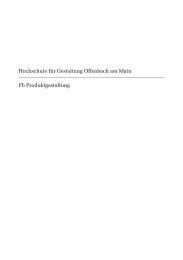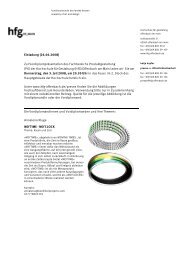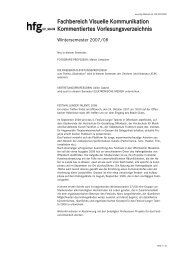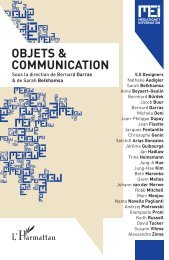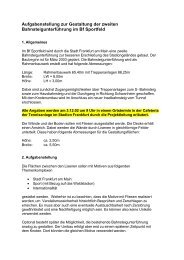User Manual
User Manual
User Manual
Create successful ePaper yourself
Turn your PDF publications into a flip-book with our unique Google optimized e-Paper software.
shutter speeds up to 1/800s. The central shutter also improves image<br />
quality by reducing camera vibration. And thanks to the large format<br />
of the H System cameras, there is a considerably shallower depth of<br />
field range, making it much easier to utilize selective focus to creative<br />
effect.<br />
A choice of large and bright viewfinders<br />
One of the important traditional advantages of the medium format<br />
is the extra-large and bright viewfinder image, enabling extremely<br />
precise compositions and easy operation in dim lighting. The H3D II<br />
comes with the HVD 90x viewfinder designed for full performance<br />
over the large 36x48mm sensor. Hasselblad has added an interchangeable<br />
waist-level viewfinder, the HVM, for the entire range of<br />
H system cameras. The bright and large viewfinder image is ideal for<br />
creative composing and the photographer is able to shoot in the fashion<br />
that suits them most; maintaining eye contact with the model,<br />
or gaining impact by shooting from a point lower than eye-level, for<br />
example.<br />
Phocus software for the professional<br />
Phocus provides an advanced software toolbox that has been especially<br />
designed to achieve optimum workflow and absolute image<br />
perfection from Hasselblad raw image files. With the H3D II camera<br />
system Phocus provides:<br />
• Uncompromising Image Quality<br />
• Special extended camera controls with which to operate your H3D<br />
II camera. These features, such as live video for easier shot set-up<br />
and workflow, or the ability to control the lens drive for focusing<br />
when the camera is in a remote position or when the digital capture<br />
unit is mounted on a view camera, bring an entirely new level of<br />
flexibility to the way you shoot.<br />
• Moiré Removal Technology automatically applied directly on the<br />
raw data, leaving image quality intact and eliminating the need to<br />
carry out special masking selections or other manual procedures,<br />
saving hours of tedious post-production work.<br />
• Flexible Workflow. The Phocus GUI features easy-to-use options<br />
that allow you to customize your set-up to suit a range of different<br />
workflow situations, such as choice of import source, browsing/comparison<br />
functions, file management, image export in a<br />
number of file formats, pre-setting of options for upcoming shoots,<br />
and much, much more.<br />
• New Metadata (GPS, etc). The extended metadata included in all<br />
Phocus images provides for accurate and detailed cataloguing and<br />
5<br />
indexing, easy image management, and includes added GPS data<br />
functionality in order to allow a range of new functions. Phocus<br />
links GPS data directly to Google Earth, for example, making geographic<br />
reference a snap and image storage and retrieval much<br />
easier.<br />
• Perfect Viewing Quality. The Phocus Viewer delivers image viewing<br />
quality that matches every detail of what you will see later in<br />
Photoshop. In addition, the Phocus Viewer allows you to customize<br />
layout and composition to suit your current or desired workflow,<br />
providing a wide range of options including full view, compare,<br />
browse, horizontal, or vertical view, and so on. You can have multiple<br />
folders open simultaneously for side-by-side viewing, comparison,<br />
and selection.<br />
Ultra-Focus and Digital Auto Correction for image<br />
perfection<br />
The H3D II camera allows information from the lens and exact capture<br />
conditions to be fed to the camera processor for ultra-fine-tuning<br />
of the auto-focus mechanism, taking into account the design specifications<br />
of the lens and the optical specifications of the sensor. In this<br />
way the full HC lens program is even further enhanced, bringing a new<br />
level of sharpness and resolution. Digital correction for color aberration,<br />
distortion and vignetting is also added. “Digital Auto Correction”<br />
(DAC), is an APO-chromatic correction of the images based on a<br />
combination of the various parameters concerning each specific lens<br />
for each specific shot, ensuring that each image represents the best<br />
that your equipment can produce. Based upon these techniques,<br />
Hasselblad has been able to expand our lens program with a 35–90<br />
mm zoom lens that has been especially developed for the H3D product<br />
family. The design of this lens has been optimized for the actual<br />
36x48mm area of the sensor to make it more compact and to work<br />
in conjunction with DAC. This is a critical part of the technology behind<br />
capturing perfect images with this extraordinary lens. The result<br />
is clear: DAC increases image resolution and delivers perfect pixels,<br />
thereby providing an ideal basis for optimal image rendering.<br />
Hasselblad’s unique natural colors<br />
Hasselblad’s Natural Color Solution (HNCS) enables you to produce<br />
outstanding and reliable out-of-the-box colors, with skin tones, specific<br />
product colors and other difficult tones reproduced easily and<br />
effectively. In order to incorporate our new unique HNCS and DACfeatures<br />
we have developed a custom Hasselblad raw file format<br />
called 3F RAW (3FR). This file format includes lossless image compression,<br />
which reduces the required storage space by 33%. The 3FR<br />
files can be converted into Adobe’s raw image format DNG (‘Digital<br />
Negative’), bringing this new technology standard to the professional



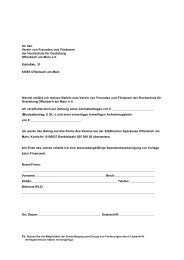
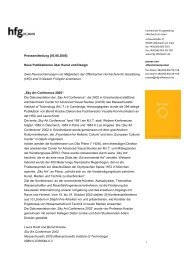
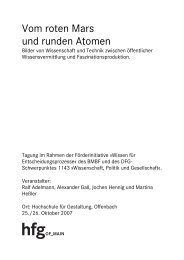
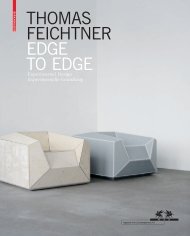
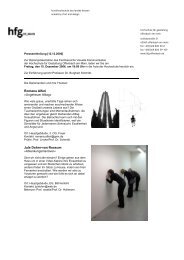

![Einladung [07.02.2006] - Hochschule für Gestaltung Offenbach am ...](https://img.yumpu.com/13375413/1/184x260/einladung-07022006-hochschule-fur-gestaltung-offenbach-am-.jpg?quality=85)
